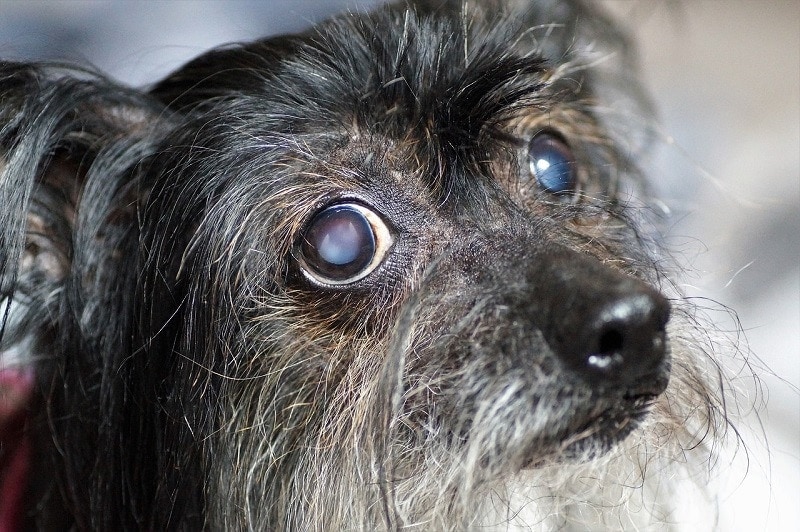5 Ways to Test Your Dog’s Vision
This test can be easily conducted from home—in the backyard or in a large, empty space to facilitate easy movement. It involves setting up an obstacle course for the dog. Create an obstacle course around the yard or room using various objects of different shapes and sizes. The objects can be ordinary items like chairs or bins. Use whatever you want, just make sure to establish a clear course path.
Let your dog negotiate the maze-like course and see how effectively he handles it. Position yourself at the end of the course and call your dog towards you. Be careful not to be overenthusiastic as this may cause the dog to rush, hence creating an ineffective assessment.
If you have stairs in your home and your dog has handled them well in the past, observing your dog going up or down a flight of stairs can provide insight on vision impairment. Be careful to be in a position where you can prevent your dog from getting injured from a fall in case he misses the steps! A dog who is reluctant or hesitant to go up or down the stairs may be showing signs of vision impairment, but its important to consider that this reluctance can also be indicative of orthopedic problems, so more testing may be needed.
Since some eyesight conditions (like retinopathies) are inherited, it would be advantageous if the obstacle course test is done in both scotopic and photopic (dark and light) conditions.
Just like humans, dogs blink when something gets close to their eyes. This test is performed by quickly passing an object close to your dog’s eye to test his blinking reflex. The test should be done in a room that has normal lighting. The technique, however, has to be done carefully so as not to hurt the dog.
There is more to this test than just waving an object or your hand close to the dog’s eyes. For effectiveness, test each eye individually. Be careful not to create air currents when moving your hand or the object you are using and avoid touching his whiskers. You can use a plastic screen, if possible.
In a healthy dog with good eyesight, he will reflexively blink quickly to shield his eyes from any object that could hurt them. This is an automatic defense response. A visually impaired dog will not blink or the response speed will be much slower.
How Can You Tell if a Dog Is Blind (3 Ways)
Sometimes, it just takes a quick look at your canine’s eyes to notice that they are blind. Many conditions that cause blindness leave visual marks on the eyes, such as cataracts. In a well-lit room, you may be able to notice these issues.
Usually, these problems look like cloudiness or fuzzy spots in the eyes. These can be a symptom of glaucoma, which is most common in older dogs. Some developmental problems are also pretty apparent by looking at your canine’s eyes. If any physical injuries have caused blindness, you may be able to notice those as well.
Discharge and crusty buildup can be a sign of an infection, which can affect your dog’s vision as well.

Of course, you will need to visit your vet for confirmation. You shouldn’t try to diagnose your dog based on your observations alone. However, noticing any of these symptoms is an obvious sign that you need to make an appointment with your vet.
Examining Your Dog’s Eyes
How do I examine my dogs eyes?
Just as our eyesight can become impaired as we age, dogs can also suffer from vision loss as they enter their senior years. However, unlike humans, dogs do not rely on vision as their most important sense. Their noses and ears allow them to adapt quite well to changes in their eyesight. Here are the signs of potential vision impairment and some steps you can take to help your senior dog cope with any loss of sight.